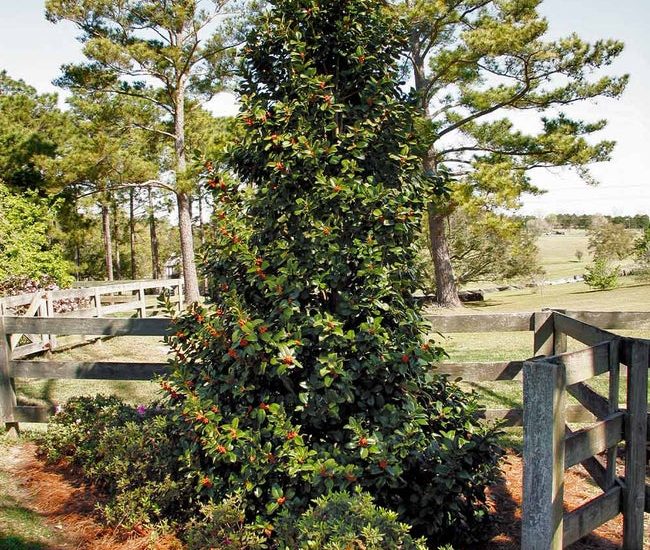Northern California Pine Trees: A Guide to the Different Species
Northern California is home to some of the most majestic and iconic pine trees in the world. These towering giants, with their distinctive silhouettes and resinous scent, are a defining feature of the region’s landscape and culture. From the towering redwoods to the slender Jeffrey pines, Northern California’s pine trees are a vital part of the ecosystem and a beloved symbol of the area’s natural beauty.

The forests of Northern California are home to a wide variety of pine trees, each with its own unique characteristics and adaptations. Some, like the ponderosa pine, have thick bark that protects them from wildfires, while others, like the sugar pine, produce enormous cones that can reach up to 20 inches long. Many of these trees have been standing for hundreds of years, weathering storms, fires, and human encroachment, and they continue to inspire awe and wonder in visitors and locals alike.
Despite their beauty and importance, Northern California’s pine trees face numerous threats, from climate change and drought to insect infestations and logging. As such, it is crucial that we continue to learn about and appreciate these incredible trees, and work to protect them for future generations to enjoy.
Species and Characteristics

Ponderosa Pine
Pinus Ponderosa, also known as ponderosa pine, is a common coniferous tree found in Northern California. It is characterized by its reddish-brown bark, long needles that grow in groups of three, and large cones that can reach up to 8 inches in length. Ponderosa pines can grow up to 200 feet tall and are often used for timber.
Sugar Pine
Pinus Lambertiana, commonly known as sugar pine, is the tallest pine species in the world, reaching heights of up to 250 feet. It is easily recognizable by its long, slender cones that can measure up to 2 feet in length. Sugar pines have a smooth, grayish-brown bark and needles that grow in groups of five.
Jeffrey Pine
Pinus Jeffreyi, or Jeffrey pine, is a medium-sized tree with a rough, dark brown bark. Its needles are long and slender, growing in groups of three, and its cones are oval-shaped and can reach up to 8 inches in length. Jeffrey pines are commonly found at higher elevations in Northern California.
Lodgepole Pine
Pinus Contorta, also known as lodgepole pine, is a subspecies of pine found in Northern California. It is characterized by its small, twisted cones and needle-like leaves that grow in clusters of two. Lodgepole pines are often used for timber and are commonly found in areas that have experienced wildfires.
Whitebark Pine
Pinus Albicaulis, or whitebark pine, is a high-elevation pine species that grows at elevations of 7,000 to 12,000 feet. It is easily recognizable by its white bark and large, edible seeds that are an important food source for wildlife. Whitebark pines have short, blue-green needles that grow in clusters of five.
Overall, Northern California’s pine trees offer a diverse range of characteristics and subspecies, each with its unique features and uses. From towering sugar pines to rugged lodgepole pines, these trees are an essential part of the region’s coniferous forests.
Ecology and Environment

Habitat and Distribution
Northern California pine trees are found in a variety of habitats, ranging from low-elevation foothills to high-elevation mountain slopes. These trees are most commonly found in the Sierra Nevada and Klamath regions of California, but can also be found in other parts of the state. They thrive in areas with moderate to high annual precipitation, and are often found growing in mixed conifer forests.
Role in Ecosystem
Pine trees play an important role in the ecosystem of northern California. They provide habitat for a variety of wildlife, including birds, small mammals, and insects. The seeds of pine trees are an important food source for many animals, and the needles and branches provide shelter and nesting sites. Pine trees also play a role in regulating the water cycle, as they absorb and release water through their roots and leaves.
Conservation and Challenges
Despite their importance in the ecosystem, northern California pine trees face a number of conservation challenges. One of the biggest threats to these trees is fire, which can destroy large areas of forest and lead to the loss of habitat for wildlife. Climate change is also a concern, as rising temperatures and changing precipitation patterns can alter the distribution and abundance of pine trees. In addition, timber harvesting and urban development can have a negative impact on pine tree populations.
To address these challenges, conservation efforts are underway to protect and restore northern California pine tree habitats. This includes efforts to reduce the risk of wildfire through forest management practices, as well as initiatives to conserve water resources and reduce greenhouse gas emissions. By working to protect these trees and their habitats, we can help ensure a healthy and diverse ecosystem for generations to come.

